Oh no! What’s that sound? Are there scraping and scuttling noises coming from inside the hull of your space habitat or orbital condo? Is it accompanied by an unpleasant fishy odor and unexplained masses of purple tentacles? If the answer is yes, then you most likely have a squeeb infestation.
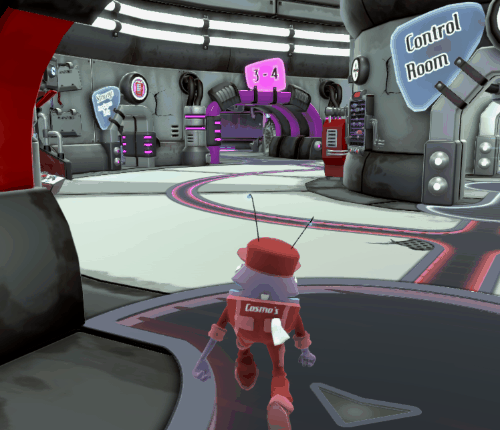
Known for their extreme tenacity and moody temperaments, squeebs are one of the most notorious pests in the galaxy. Each year, squeebs cost trillions of space dollars in damage, making them a property owner’s worst nightmare. But this post isn’t about fixing your squeeb problem. Leave that to the experts! Instead I’m here to tell you about how squeebs are formed and what makes them tick… from a technical standpoint. Who knows? Maybe this information will help you prepare for a squeeb infestation in your future or at the very least, frighten you enough to avoid living in space entirely.
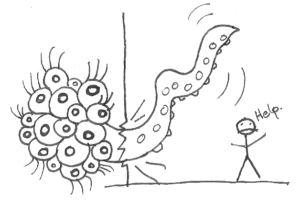
The “Many Eyes Theory” suggested by space biologist Dr. Debra Glarphenstein.
Despite their ubiquitousness, nobody has ever seen a squeeb in its entirety. While there are some plausible theories as to what the rest of their body looks like, I am only going to focus on their most prominent and destructive feature. The tentacles.
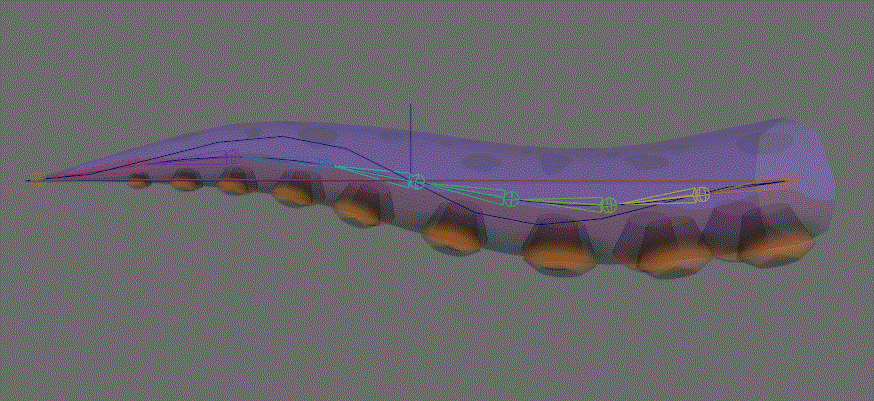
Here we see an X-ray of an amputated squeeb tentacle. Despite their resemblance to an octopus or squid, the tentacle is actually supported by a chain of cartilaginous bones along its length, which gives it far more strength than typical invertebrates. The wiggly behavior of the tentacle is driven by an IK spline, which can be thought of as a long ropey muscle that tugs on the bones. The actual movement of the spline is directed by a pair of sine wave deformers whose “offset” parameters are adjusted over time. This causes the muscle to wriggle up and down as well as left and right in a predictable wave pattern. In addition to the wave deformers, the “twist” parameter of the IK spline is manipulated to make the suction cups turn from side to side toward the end of the tentacle. The curious squeeb uses this behavior to probe their environment for foodstuffs, potential mates, and new hiding places.
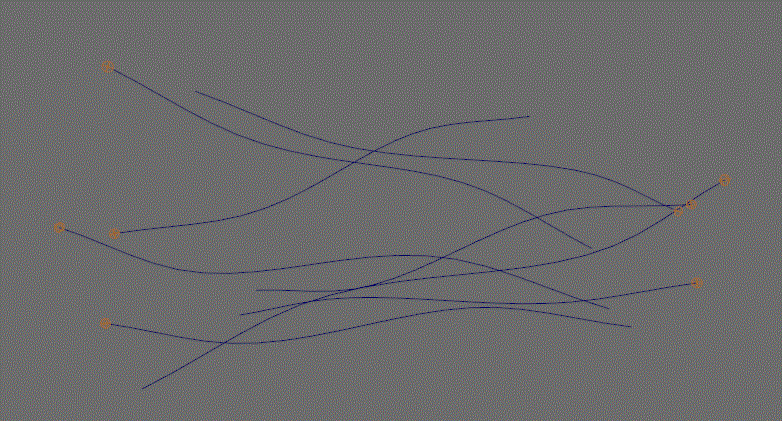
Thanks to the squeeb’s squishy bones, they can contract to an infinitely small singular point by scaling their root joint. The splines make sure the skeleton follows the path of the curve no matter how big or small they are. This allows them to fit into the tightest of crannies or expand to fill up a large volume of space. This rapid transition of scale looks kind of stupid and unrealistic, but the self-conscious squeeb is well aware of this. That’s why squeebs love to cause explosive clouds of environmental damage to hide this shortcoming.
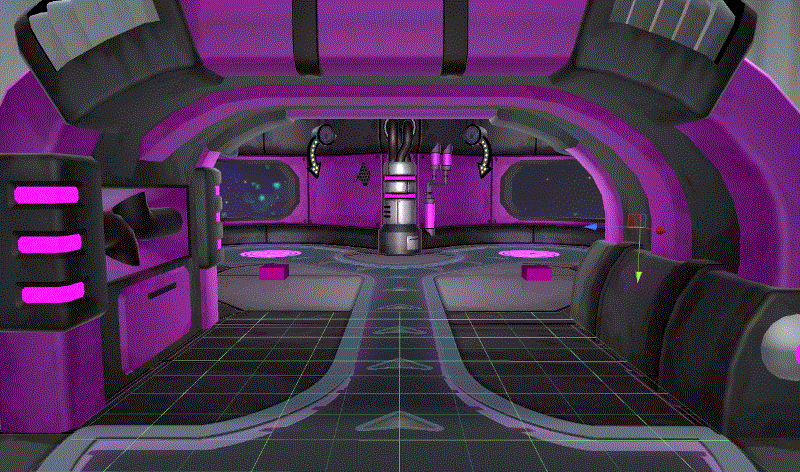
A particle system spawns a blast of debris whenever a squeeb emerges from or retreats into its hiding place. An assortment of simple meshes with physics-driven sphere colliders are used to highlight the destructive power of the squeeb while obscuring the awkward growing and shrinking transitions.
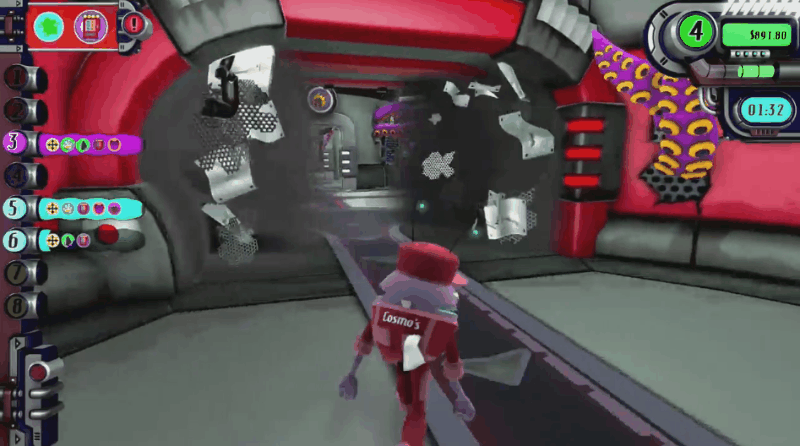
Now that the squeeb has established itself within the hollows of the structure, it does what it does best. Duplicate, duplicate, duplicate! And the inevitable result is complete and utter chaos. So if you see any warning signs of an infestation, call your local pest exterminator immediately! And for preventative measures, consider spot welding any cracks or crevices in your hull, especially in dated space structures.
*Paid for by Galactic Voter Initiative Proposition 38b – Squeeb Infestation Awareness Fund*